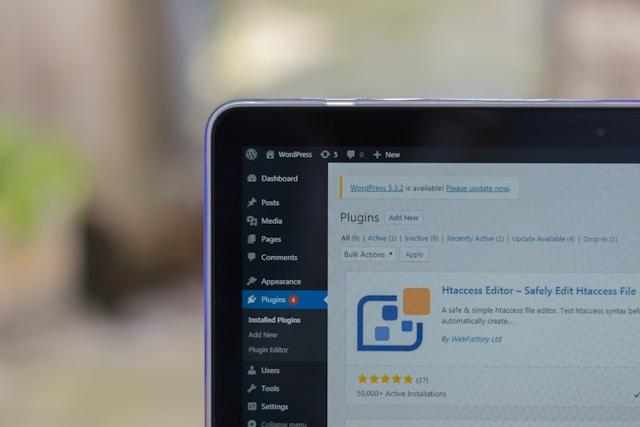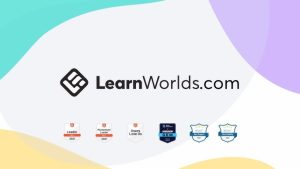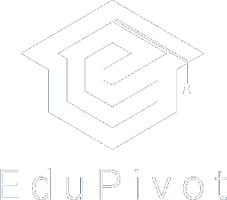Why course creation is the cornerstone of LMS success
Investing in a Learning Management System (LMS) is a critical step for any organization focused on employee development, compliance training, or customer enablement. It’s really only the first step, though.
We can think about a Learning Management System as a course library: it’s designed to hold learning materials and keep track of who’s accessing what. No matter how fancy an actual library is, it’s only functional if 1) it has books and other resources in it, and 2) those books and other resources are accessible and well-organized.
Likewise, an LMS isn’t worth its subscription fee and overall cost unless 1) it holds relevant online course content, and 2) that course content is engaging, clear, relevant, and accessible.
Maximizing the impact and effectiveness of an LMS is all about thoughtful course creation. The container is important, but the knowledge that it contains is one of the main points.
At EduPivot LLC, we specialize in guiding clients through all the stages of organizational learning, from LMS selection to implementation. At every level of involvement, EduPivot provides administration training and ongoing support.
In this guide we’ll explore four primary methods for creating eLearning courses within your Learning Management System, from DIY content creation using built-in tools to hiring a full-service agency or instructional designer.
By the end, you’ll have a sense of how to optimize training and development in your organization with eLearning, tailored to your team’s size, goals, and budget.
Option 1: Creating basic courses using build-in LMS authoring tools
Empowering teams through practical tools and ongoing support
When helping small businesses choose an LMS, one of the key functions we’re looking for is the incorporation of robust built-in course creation tools.
What this means is that a good LMS will make it easy for you to organize and deliver your own course content without needing to use third-party software or vendors.
This option might look like investing in TalentLMS, creating a new online course in the LMS, and inputting content using their AI content generator, which includes interactive elements such as drag and drop, accordion, slide shows, and quizzes.
Our clients who use this model of course creation tend to be smaller companies with an HR staff member who has a basic foundation is corporate training. These clients typically have a need for targeted support with LMS functionality.
This approach is also ideal for entrepreneurial course creators and subject matter experts who want to sell their own online courses. Staying closely connected with the course development process allows them to stay nimble, control branding, and reduce costs.
Many small companies who take this approach choose to enhance their content with free or low-cost tools like Canva (for visuals), Loom (for recording videos), and Google Slides (to repurpose existing presentations).
Instructional design tips for internal course creators
Course creation efforts can be supported by a couple of well-known pedagogical frameworks (i.e. ideas about the method and practice of teaching).
The first is Malcolm Knowle’s theory of andragogy (like pedagogy but for adults!), which emphasizes that adult learners are self-directed, need relevant content, and value practical, real-world application.
Another resources is Robert Gagne’s Nine Events of Instruction, which outlines the structure of effective training, from gaining attention and presenting content to providing practice opportunities and offering feedback.
Above all, DIY online course developers should focus on setting clear learning objectives, ensuring alignment with business goals, and incorporating knowledge checks throughout to support memory retention and engagement.
Pros:
- Cost-effective eLearning development
- Ideal for frequent updates and iterations
- No need to buy third-party eLearning authoring
Cons:
- Limited content interactivity and design polish
- Requires basic instructional design knowledge
- Visual quality depends on internal skills and team support
Best for: eLearning design and development for small businesses, entrepreneurs, and teams looking to build capacity without large budgets.
Option 2: Buying off-the-shelf courses for immediate use
Quick, professional training without development overhead
While the first option for online course creation involves hands-on authoring of eLearning content, the second option takes all of that work off your plate, drawing on resources developed by external instructional designers.
Off-the-shelf online courses offer a plug-and-play solution to satisfy training needs, especially in learning scenarios related to professional standards and legal regulations – anything that doesn’t require organizational specificity. Examples include compliance, cybersecurity, and workplace conduct. Take LinkedIn Learning for example, where employees can sign in and access a robust library of ready-made online coursework.
These professionally developed online courses are typically SCORM-compliance, which means they can be dropped into your Learning Management System platform with minimal adaptation. They also usually feature build-in assessments, and they can be updated regularly to reflect evolving legal and professional standards and requirements.
Uploading off-the-shelf courses into an LMS is a favored approach among smaller companies that need fast and cost-effective eLearning for their Learning Management System.
When clients take this approach, EduPivot assists in selecting and integrating off-the-shelf offerings while ensuring they align with corporate training roadmaps and organizational identity.
Pros:
- eLearning that is quick to deploy
- Cost-efficient
- Professionally produced
Cons:
- Limited customization
- Courses may not reflect your brand tone or organizational culture
- Typically less engaging than custom-developed online training
Best for: Companies with immediate online training needs, limited instructional design capacity, or recurring compliance requirements.
Option 3: Partnering with an eLearning Development Agency
Tailored solutions for high-stakes, high-impact training
If we compare any given LMS to a kitchen, we might look at the first option (authoring your own course) as learning how to cook at home and the second option (buying off-the-shelf online courses) as ordering a meal kit or getting take-out.
In this analogy, partnering with an eLearning development agency could be compared to hiring a catering company or a private chef for a special event – someone who works with you to develop and execute a menu based on your particular needs and preferences and the nature of the occasion.
Working with an eLearning agency can be an optimal approach to online course creation when your organization needs fully custom, interactive, and media-rich courses. An experienced agency can create custom content that aligns with your brand and corporate training goals, incorporating more sophisticated elements like 2D or 3D animation, voiceover narration, gamified modules, and responsive multimedia.
This option is ideal for mature organizations that either a) know what kind of custom training they need or b) require expert help in identifying knowledge gaps and developing training objectives.
One example of a scenario in which we would encourage working with an eLearning agency is a regional airport developing training for new tarmac procedures. Here, safety and compliance are critical, and effective training can reduce accidents and boost operational efficiency.
Cinch Learning is a great example of an eLearning agency that supports this dynamic level of course creation. Agencies such as Cinch Learning manage the entire development life cycle, which means that clients don’t have to hire graphic designers, video editors, instructional designers, or narrators. Every element of course creation is handled in-house, making the process smoother for Human Resources and L&D departments.
What you get with this approach
Working with an eLearning development agency gets you a fully produced, professionally designed course that’s custom-made to meet your specific needs, whatever they may be: improving employee performance, changing behaviors, or ensuring regulatory compliance.
These courses are polished, media-rich, and built to maximize learner engagement and retention.
Pros:
- High-quality eLearning content
- Great for complex or strategic learning initiatives
- No need to manage multiple vendors
Cons:
- Higher cost upfront
- Development takes time and requires planning
- Less flexibility for quick edits
Best for: Established companies, government contracts, and corporate training programs with complex requirements.
Option 4: Hiring an instructional designer (In-house or contract)
Building internal capacity for long-term success
The fourth and final option for creating course content for your Learning Management System is to hire an instructional designer, either full-time or as a consultant.
While working with an eLearning agency involves collaborating with an interprofessional team that’s external to your organization, hiring an instructional designer and/or eLearning developer means weaving someone into your own team, either temporarily or on an ongoing basis.
The instructional designer is responsible for designing the learning experience for the courses in your LMS: writing learning objectives, structuring the courses, aligning online curriculum to organizational goals, and working with subject matter experts to extract and organize relevant knowledge.
This option is best for larger or mature organizations with the budget to support a learning and development team. Hiring a dedicated instructional designer can also be a more sustainable solution for organizations planning to produce a large volume of custom eLearning courses. It can also be cost effective for companies who have organizational capacity for additional internal resources (they already have a graphic designer, LMS administrator, or a video editor).
A well-rounded team can produce branded, SCORM-compliant content on authoring tools such as Articulate Storyline, Adobe Captivate, or Rise 360 – all tailored specifically for your corporate learning and training goals.
What this enables
The key advantage to hiring an instructional designer is maintaining full ownership of your learning strategy, from ideation to delivery. Generating eLearning content internally with the guidance of a dedicated instructional designer allows your team to create highly customized knowledge assets that work perfectly with your Learning Management System, as well as with your company values, branding, and goals. This type of course content is also adaptable over time, allowing for ongoing innovation and customization as your training needs evolve.
Pros:
- Custom eLearning content aligned with internal goals
- Flexible for continuous updates in LMS
- Builds institutional knowledge and internal expertise
Cons:
- Requires upfront recruitment and onboarding costs
- May still need complimentary skills (video, animation, etc.)
- Best suited for long-term strategies, not urgent needs
Best for: Enterprises with frequent training demands, companies creating proprietary systems or processes, and organizations seeking to mature their corporate L&D function.
Final thoughts: Combining approaches for maximum impact
While plenty of organizations rely on one particular pathway to eLearning course creation, at EduPivot LLC, we recommend a blended approach in order to truly optimize the learning experience. Meaningful customization and ongoing adaptability are supported by a well-rounded toolkit, which can include any or all of the options outlined above.
For example, an organization might use built-in authoring tools on an LMS to create an online course for internal standards of procedure, knowing that this content will need to be adapted frequently over time.
The same organization might choose to buy off-the-shelf content when it’s time for safety compliance training. Quick, affordable, pre-packaged, and up-to-date.
It might be time to hire an eLearning agency when the same organization rolls out a new internal software tool, and they need engaging and accessible training content for their employees. If these kinds of upgrades are frequent, the organization might consider hiring an instructional designer and/or eLearning developer.
While understanding each of the four approaches to course creation is important, a blended approach provides the most flexibility and ensures your LMS is utilized to its full potential.
Each method comes with strengths and weaknesses, but each method works with your Learning Management System.
Let EduPivot LLC be your guide
Whether you’re looking for the best Learning Management System for small businesses or looking to expand your corporate training portfolio, EduPivot LLC is ready to help you make the most of your learning system. We offer:
- Personalized LMS recommendations
- LMS administration training and ongoing support
- Strategic consulting for course development
- Access to instructional designers and agency partners
Let’s turn your LMS into a true learning engine. Reach out to us today to explore next steps.






